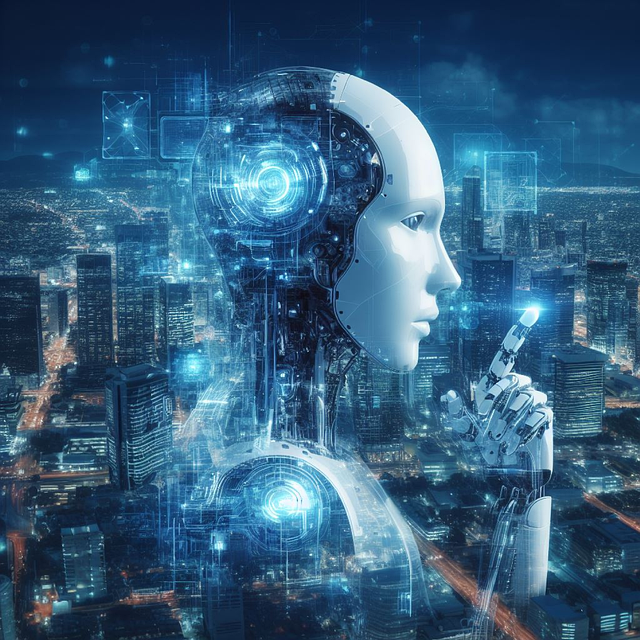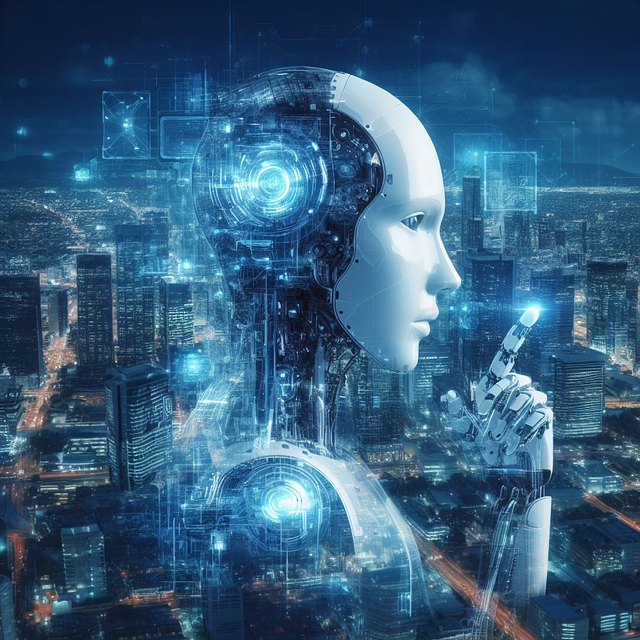“Unraveling the world of AI chatbots: A comprehensive guide. In an era dominated by digital interactions, these conversational agents are transforming the way we communicate and access information. This article offers a holistic view of AI chatbots, from their foundational concepts to cutting-edge applications. We’ll explore how these intelligent systems understand and respond to user queries, delve into various use cases across industries, and analyze both the advantages and challenges they present. Get ready to discover the future prospects and trends shaping the ever-evolving landscape of AI chatbots.”
- Understanding AI Chatbots: A Basic Breakdown
- How AI Chatbots Work: The Inner Mechanics
- Types of AI Chatbot Applications and Use Cases
- Benefits and Challenges of Implementing AI Chatbots
- Future Prospects: Trends Shaping AI Chatbots
Understanding AI Chatbots: A Basic Breakdown

AI chatbots are a form of artificial intelligence designed to simulate human conversation through text or voice interactions. They use sophisticated algorithms and natural language processing (NLP) to understand user inputs, generate appropriate responses, and learn from each interaction. These chatbots can perform various tasks, from answering simple questions to providing complex customer support, based on their programming and training data.
At their core, AI chatbots operate by breaking down user messages into keywords or intents, mapping these to predefined responses, and using context-aware algorithms to ensure coherent and relevant conversations. They continuously learn and evolve as they gather more interactions, improving their accuracy and ability to handle a broader range of queries. This dynamic nature sets them apart from traditional rule-based chatbots, making AI chatbots versatile tools in today’s digital landscape.
How AI Chatbots Work: The Inner Mechanics

AI chatbots function through a complex interplay of natural language processing (NLP) and machine learning algorithms. These chatbots are designed to understand, interpret, and generate human-like text based on user inputs. When a user types a message, the AI chatbot breaks it down into components, analyzing keywords, context, and sentiment using NLP techniques. This process involves recognizing entities, intent, and sentiment analysis, enabling the chatbot to grasp the user’s query or command.
The chatbot then uses its vast knowledge base and pre-trained models to generate an appropriate response. Machine learning algorithms play a pivotal role here, as they help the chatbot learn from countless interactions, improving its accuracy and relevance over time. This iterative process allows AI chatbots to provide personalized, contextually relevant answers, making them increasingly useful in various applications, from customer service to healthcare.
Types of AI Chatbot Applications and Use Cases

AI chatbots have revolutionized various industries, offering a wide array of applications and use cases. From customer service to healthcare, education, and entertainment, these virtual assistants are transforming the way we interact with technology. One prominent application is in customer support, where AI chatbots handle initial queries, provide quick answers, and escalate issues when needed, ensuring efficient and 24/7 accessible assistance.
In healthcare, AI chatbots assist patients by offering medical advice, scheduling appointments, and even providing mental health support through therapeutic conversations. They can also aid in research by processing vast amounts of data and generating insights. In education, these chatbots personalize learning experiences, answer student queries, and provide interactive tutoring, making learning more engaging and accessible. Additionally, AI chatbots are used in marketing for lead generation, content creation, and personalized recommendations, enhancing customer engagement and driving sales.
Benefits and Challenges of Implementing AI Chatbots

Implementing AI chatbots offers a multitude of benefits, transforming customer service and engagement. These intelligent assistants can handle numerous queries simultaneously, providing instant responses 24/7. They enhance user experience by offering personalized interactions, leveraging data to anticipate needs and deliver tailored solutions. Moreover, they reduce operational costs for businesses by automating repetitive tasks, allowing human agents to focus on more complex issues.
However, challenges accompany the adoption of AI chatbots. Ensuring accuracy and avoiding misinformation is paramount; these systems rely on training data, and biases present in that data can be reflected in their responses. Maintaining user trust requires transparency about chatbot capabilities and limitations. Additionally, ethical considerations arise regarding data privacy and job displacement due to automation. Balancing these benefits and challenges is crucial for effective and responsible AI chatbot implementation.
Future Prospects: Trends Shaping AI Chatbots

The future of AI chatbots is brimming with potential, driven by advancements in natural language processing and machine learning. One prominent trend involves integrating contextual understanding, enabling chatbots to grasp nuances in human communication. This enhancement allows for more sophisticated conversations, where chatbots can recall previous discussions, providing relevant and personalized responses. Additionally, the fusion of AI chatbots with voice user interfaces is set to transform how users interact with technology, making digital assistance more accessible and intuitive.
Another significant trend is the growing focus on ethical considerations in AI chatbot development. As these conversational agents become more pervasive, ensuring transparency, fairness, and user privacy becomes paramount. Developers are increasingly adopting responsible AI practices, including bias mitigation techniques and explainable AI models, to foster public trust and ensure that AI chatbots serve as beneficial digital assistants rather than potential pitfalls.
AI chatbots are transforming communication and customer service, offering diverse applications from simple task automation to complex conversational interfaces. As technology advances, these chatbots will increasingly become more sophisticated, capable of understanding nuanced human language and generating responses that feel natural and human-like. However, challenges remain, including ensuring data privacy and ethical considerations. Despite these hurdles, the future of AI chatbots looks promising, with trends suggesting they will become integral to various industries, enhancing user experiences and streamlining operations.
